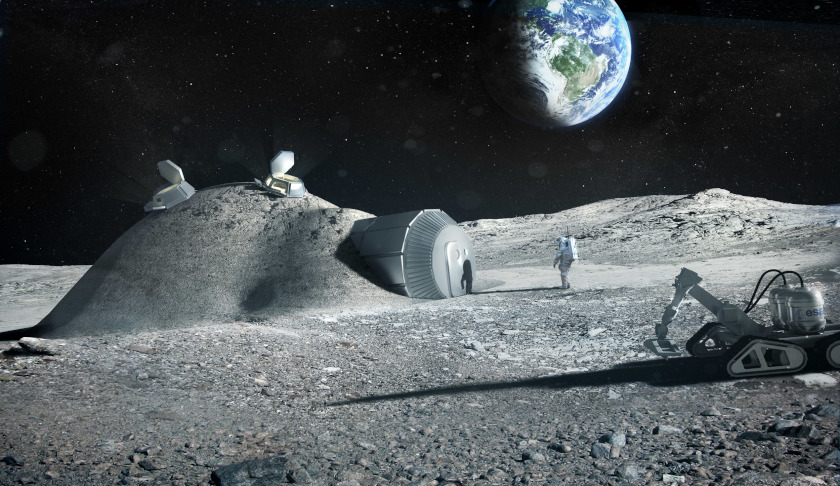
The project reports were researched and written by two international teams drawn from the 53 program participants from 14 countries.
The project work was performed in addition to the other intensive academic and hands-on program activities, designed to educate and train space professionals in the international, interdisciplinary and inter-cultural dimensions of space.
The Lunar Agriculture Report noted that as NASA prepares to return to the moon with the upcoming Artemis program as a stepping stone to Mars, humans will be required to survive in space for longer periods of time and in harsher environments.
University of South Australia program co-director, Dr Ady James, explained, "The team projects give the participants an opportunity to extend, through research, what they have learned in the early part of the program and to apply this to a current issue in the space domain."
As humanity gets closer to living off-world, the report contains recommendations for the early stages of the establishment of a lunar farm. These recommendations include:
- The use of semi-subsurface or subsurface structures for a lunar farm to mitigate the impact of harmful radiation, micrometeorites and severe temperature variations; and
- The construction of a settlement at a polar location, to increase insolation and access to water ice.
The report also suggests food sources, including plants, cell cultures and insects, selected for their nutritional value and ability to create diverse meals that suit the physiological and psychological requirements of humans.
Finally, the report proposes an international authority model as the most appropriate management structure for the lunar farm.
ISU program director, Arif Göktuğ Karacalıoğlu, said, "Each of our participants is an expert on a specific field, but they have very little background in others. In this exercise, we intentionally asked them to work on a highly interdisciplinary task and gave them little time to generate a high-calibre report."
The Access to Space Report contains a comprehensive analysis of the changing dynamics and cost structure of the international small satellite launch market and found that there are significant economic, commercial and geo-strategic opportunities for reliable, effective and efficient access to space in the southern hemisphere.
The report focuses on Australia as a case study – a country with distinctive geographic and geo-political advantages.
After a careful inter-disciplinary analysis, the report proposes and describes an international framework between member states that could provide an effective way of developing reliable, effective and efficient commercial access to space for southern hemisphere nations.
"To succeed, they needed to self-organise, divide tasks, and operate with an international and intercultural mindset, not only for the context of their research and findings but also to make sure all voices within their team were heard and valued throughout the process. The end results prove that they have succeeded extremely well," Karacalıoğlu said.
Dr James added, "This helps to consolidate their understanding and develop their skills in team work, research and presentation."
The Southern Hemisphere Summer Space Program (SHSSP) was launched in Adelaide in 2011 in a partnership between the ISU (headquartered in Strasbourg, France) and the University of South Australia.
The annual SHSSP is an intensive, five-week, live-in experience in the southern hemisphere summer, involving the international, intercultural and interdisciplinary educational philosophy for which ISU is renowned.
The program is open to students from all nations with graduate qualifications or in the last two years of their undergraduate studies.
This year’s program, launched on 13 January 2020, has a record 53 participants from 14 countries.
Receive the latest developments and updates on Australia’s space industry direct to your inbox. Subscribe today to Space Connect here.









